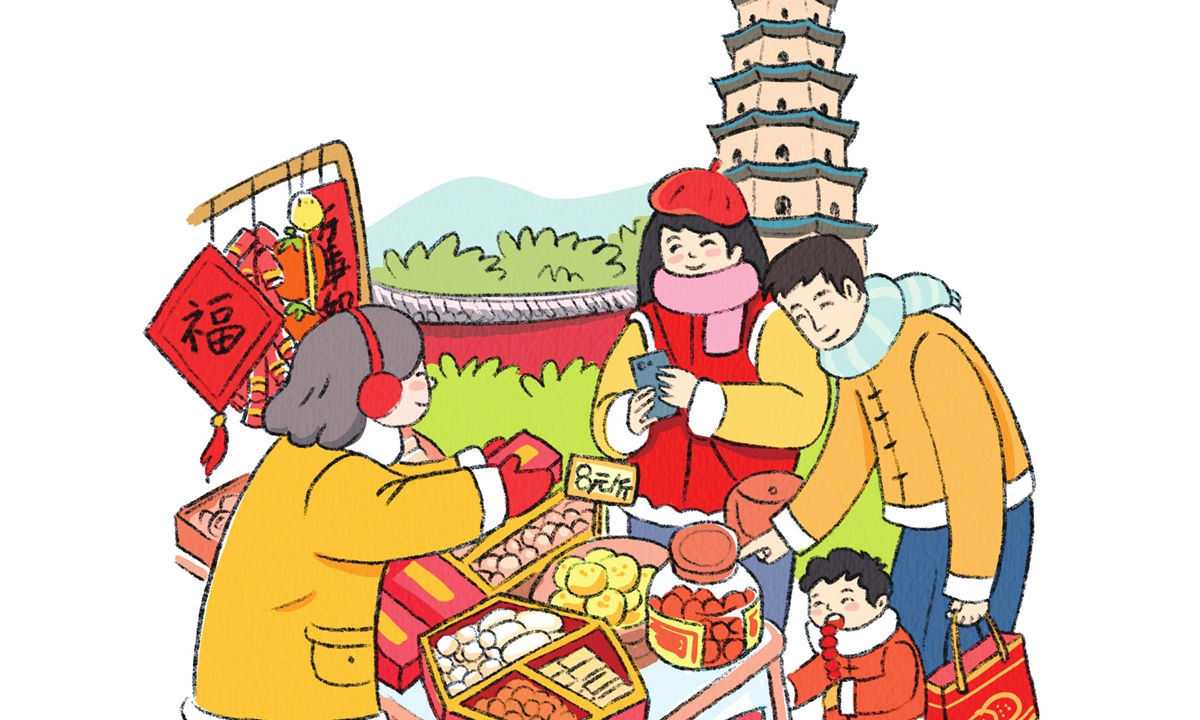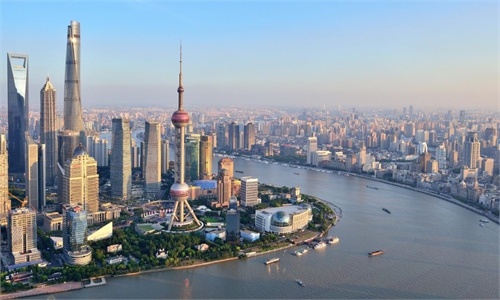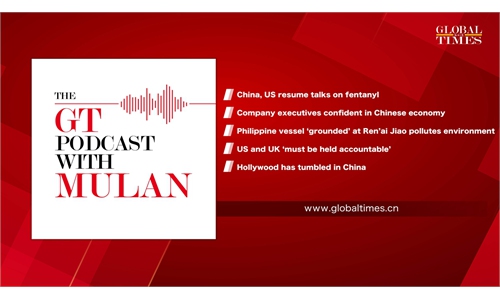
Illustration: Liu Rui/GT
Long queues for cable cars, crowded ski slopes and bustling ski resorts... My skiing experience during this Spring Festival holidays in my hometown showed the city's enthusiasm and vitality.My hometown is Taiyuan, capital of Shanxi Province. The province previously went through a period of speedy development given its abundant coal reserves, but was then trapped in an unhealthy economic framework dominated by coal.
Decades ago, it was known for "coal" and "pollution." But long gone are those days. In recent years, pleasant surprises have bubbled up ceaselessly every time I went back to the city. With its strong promotion of the green transition and development of tourism, Taiyuan has finally become a hot tourist destination.
According to media reports, Taiyuan was one of the top 10 most popular destinations for tourists from southern China during the eight-day Spring Festival holidays. During the entire holidays, the parking lots of Taiyuan's Ancient County Town, 20 kilometers away from the downtown city, as well as the Tianlong Mountain scenic area and the Shanxi Museum were mostly full of delighted visitors.
Beyond Taiyuan, the whole of Shanxi Province has been bustling and lively. The Wutai Mountain scenic area has been saturated with vehicles and visitors, so on February 14, ticket sales stopped early in the morning as the number of visitors reached their peak too soon that day. The Yungang Grottoes in Datong city and the Ancient City of Pingyao were all crowded with tourists, with local netizens describing the scenes as feeling like "a billion people have come." The queuing time at some scenic spots could be around five hours or even longer.
A friend of mine came up with the idea of driving around Datong city on the second day of the Spring Festival - the Chinese Lunar New Year. However, she soon found that all the local hotels were fully booked. Tourism orders in Shanxi Province on the first day of the Spring Festival holidays increased 16 times compared to the same period of the previous year.
During the holidays, my social media was flooded with large number of photos from family members and friends of their travel experiences. I went to a local ski resort and I had never thought I would witness such a prosperous ice and snow economy in a former industrial city. For a moment I could not even find the end of the long queue for making reservations to hire professional ski instructors and to rent ski equipment.
After skiing, my friends and I returned to the city center around 2 pm to have lunch together. Almost all the restaurants in the shopping mall were full, and we waited about 15 minutes to get a table.
What is behind this lively scene? It's the abundant supply of food, commodities and services, as well as a rich choice of performances, scenic spots, hotels and B&Bs. There are also increasingly appealing activities like temple fairs, dragon dances and flower festivals, and the fact that people's consumption capacity has reached a higher level. People have come to spend more and more of their income on development-oriented, personalized and diversified consumption.
However, during the holidays, some Western media outlets have portrayed a pessimistic image of China, with headlines like "It's Grim out There: China's Economy in the Year of the Dragon," and "China's consumers tighten belts even as prices fall."
The China that I saw with my own eyes was completely different. I saw dazzling fireworks, red lanterns hanging in every household, various Lunar New Year activities and crowded places, and parents taking their children to botanical gardens, museums and skiing.
My hometown is a microcosm of China. China's box-office revenue during this year's Spring Festival holidays reached over 8.016 billion yuan (about $1.12 billion) as of Saturday. The total number of moviegoers reached 163 million. A total of 474 million domestic tourist trips were made across the country during the eight-day holidays, up 34.3 percent from the same period one year earlier. In such a vibrant scene, how can anyone come to a conclusion that there is a "grim" outlook or a need to "tighten belts"?
China's economy does face difficulties and challenges. The truth is that difficulties exist every year, and in every country, indeed. Now, there is a complex external environment, a sluggish world economy and trade, insufficient effective demand, and excess capacity in some industries. Looking back, there were more problems, including the pandemic and other challenges from China's ever ongoing reforms. China overcame these difficulties one by one, and every year the country celebrates a joyful Spring Festival. This is how China develops - always climbing mountains and overcoming obstacles.
My hometown's biggest challenge was to transform its development model. It has managed to do it, and turned its development focus from heavy industry to information technology, new materials and green energy.
Taiyuan, which was once shrouded in coal ashes, has completely changed its image with nearly 20 forest parks, while embracing a green environment and lifestyle.
During the festive days I spent in my hometown, I felt cheerful, energetic and young again. I saw how dynamic the city is, and I know it reflects the dynamism of China.
The author is a reporter with the Global Times. opinion@globaltimes.com.cn



